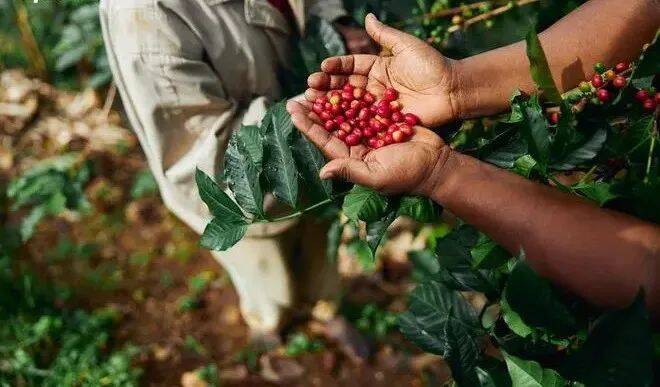Introduction to Papua New Guinea Coffee producing areas, Coffee varieties and Bird of Paradise Coffee
Papua New Guinea is located in the southwest of the Pacific Ocean. It borders the province of Iriancha in Indonesia to the west and faces Australia across the Torres Strait to the south. It is also an archipelago country with more than 600 islands.
Papua New Guinea has a mountain climate above 1000 meters above sea level and the rest has a tropical climate. The dry season is from May to October, and the rainy season is from November to April. The average annual temperature in coastal areas is 21-32 ℃, while that in mountainous areas is 5-6 ℃ lower, with an average annual rainfall of 2500 mm.

Coffee cultivation began as early as the 1890s, but it was not initially regarded as a commercial product. In 1926, 18 coffee estates were established, using seeds from the Jamaican Blue Mountain Coffee (Blue Mountain), which adapted well after introduction, so Papua New Guinea was also known as the "Little Blue Mountains". It was not until 1928 that the coffee industry began to flourish. In the 1950s, the coffee industry park experienced structural growth, and more infrastructure began to be built. Another even greater development came in the 1970s, when the government offered a series of programs to encourage small farms to operate in co-operatives because of the decline in coffee production in Brazil. In the 1980s, the industrial structure began to change and the center of gravity began to disperse. After that, the price of coffee fell, and many estates fell into financial crisis. By contrast, small farmers are able to continue to produce coffee because of less market volatility. Today, 95% of the country's producers are small farmers, producing 95% of the country's coffee, all of which are Arabica varieties.
Most coffee beans in Papua New Guinea come from Highland Province, and although coffee is grown in other areas, it produces less. Mainly planted bourbon, tin card varieties, the harvest period is from April to September.

Eastern Highlands is the second largest coffee producing province in Papua New Guinea, located in the middle of the country. The island has a mountain range that spans the whole region, and the East Highland is part of it. Planting at 400-1900 meters above sea level
The West Highlands Province (Western Highlands), the country's major and largest coffee-producing province, is grown around the regional capital, Mount Hagen, and the city is named after an ancient dormant volcano. The elevation here is 1000-1800 meters. Qianjie Paradise Bird Manor coffee beans are produced in this area, tin card varieties, using washing treatment, with caramel, cocoa, almond flavor, balanced and silky taste.
Jiwaka is located in central Papua New Guinea. The Wagi River runs through the main valley of Givakati, flanked by steep volcanoes and ridges. At 1400-2000 meters above sea level, tin cards, bourbon and New World are mainly grown here.
In the mountainous inland provinces of Chinbu province (Cimbu Province), the output is relatively low, accounting for only 7% of the national coffee production, which is 1300-1900 meters above sea level.
Coffee in Papua New Guinea is graded according to the number of defects, with a total of 12 grades.
Important Notice :
前街咖啡 FrontStreet Coffee has moved to new addredd:
FrontStreet Coffee Address: 315,Donghua East Road,GuangZhou
Tel:020 38364473
- Prev

Costa Rica launches 12 coffee-themed NFT to promote coffee research and protection
Recently, the Costa Rican boutique Coffee Association (SCACR), the Center for Tropical Agricultural Research and higher Education (CATIE) and the NFT marketing company BIOCENFT have jointly launched 12 coffee-themed NFT works of art, including "Geisha".
- Next

Coffee shop part-time: where are my working hours?
▲ Click to follow | Daily boutique Coffee Culture Magazine Coffee Workshop on the recent social platform, many lucky workers sent posts saying: the working money is so small! It turned out that it was winter, and Rui Lucky's part-time job began to be accused of working hours. Judging from the content of these posts, there are only five working hours a day and only three hours a week.
Related
- What effect does Italian American coffee with filter paper have? Will coffee taste better if it is put on filter paper at the bottom of the powder bowl?
- What is the color difference in coffee beans? What are the characteristics of honey processed coffee beans? Why are the anaerobically treated coffee beans uneven in color?
- How does novice Xiaobai quickly get started and make coffee? Newbies learn to make coffee by hand and share the specific steps and process process!
- Costa tea has a shelf life of 100 years?! Expert: Unable to verify
- It's a huge uproar! American milk addition was rejected by Manner employees?!
- Mocha pot coffee bean recommendations| How fine and how much powder should be used for grinding? What parameter ratios do I need to use to make milk with Mocha pot coffee?
- What are the characteristics of the world's top ten coffee beans treated with Costa Rica honey? How to make black honey kadura from Tarazhu Pilon Processing Plant taste good?
- How to make deep-roasted coffee? What grinding water temperature does authentic Jamaica Blue Mountain No. 1 coffee use to brew it well?
- Selected high-grade rose summer coffee flavor tasting guide Why Panama rose summer has the aroma of flowers and fruits
- What equipment does a novice Xiaobai need to buy to learn to make coffee? Filter cup electronic scale bean grinder manual flushing pot purchase guide

